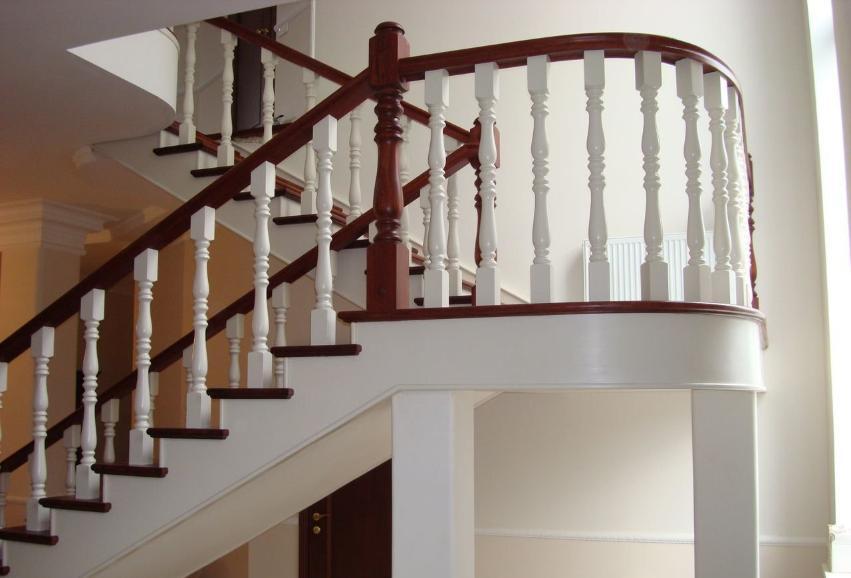
The Journey of a Stair: From Idea to Masterpiece
- 8527
- 0

The Architectural Ascent: Crafting Exceptional Staircases 🪜✨
The humble stair, often taken for granted, possesses a profound history, evolving from mere necessity to a pivotal architectural statement. Early human settlements required means to navigate vertical spaces, leading to rudimentary steps. These initial constructions were purely utilitarian, prioritizing access and stability, laying foundational understanding of vertical circulation. The journey of the stair began as an essential response to environmental challenges.
Throughout antiquity, civilizations refined stair construction, primarily using stone and wood. Their creations, while functional, incorporated elements of grandeur, reflecting the power of their builders. Monumental steps to temples or intricate internal stairwells showcased more sophisticated structural principles, enabling steeper ascents and robust forms. Hints of aesthetic consideration emerged in scale and symmetry.
The Renaissance marked a significant turning point, transforming staircases into elaborate artistic expressions and central features of grand buildings. Architects experimented with curvilinear forms, intricate balustrades, and decorative newel posts, elevating the stair from pathway to spectacle. Baroque and Rococo periods amplified this, with sweeping double staircases and dramatic sculptural elements. These structures were about creating a majestic ascent experience.
In the modern age, evolution of materials and engineering propelled staircase design into an era of unprecedented innovation. From minimalist floating stairs to complex helical designs, contemporary staircases seamlessly blend cutting-edge technology with timeless artistry. Emphasis is on creating bespoke solutions that integrate harmoniously with architectural vision, enhancing both functionality and aesthetic appeal. This journey reflects a continuous human desire to innovate and beautify spaces.
Insights from the Architectural Journey:
- Fundamental principles of vertical access remain constant, yet their execution continually adapts to new materials and design philosophies, demonstrating enduring relevance across epochs.
- Material science and engineering advancements are crucial drivers of innovation, allowing for previously impossible forms that push the boundaries of design and spatial dynamics.
- A staircase is more than just ascent; it is a powerful architectural element influencing the perception, flow, and character of an interior space, impacting user experience.
Interpreting the Ascent: Debates and Innovations
The inherent tension between aesthetic ambition and structural integrity remains a central theme. While designers strive for visually striking forms, engineers must ensure safety and durability. This delicate balance necessitates a deep understanding of materials, load-bearing capacities, and construction techniques. The challenge lies in creating designs both beautiful and robust, a testament to collaborative ingenuity.
Modern technology has revolutionized design and fabrication. Computer-aided design (CAD) and manufacturing (CAM) allow for highly complex geometries with precision, reducing errors and expanding creative possibilities. Parametric design tools enable rapid iteration and optimization, transforming how architects conceptualize intricate stair structures. This digital revolution empowers creators to push boundaries.
Sustainability is a critical consideration in contemporary staircase creation. Material selection, from responsibly sourced hardwoods to recycled metals, plays a vital role. Efficient manufacturing processes that minimize waste and energy consumption are increasingly prioritized. Brickettakad embraces these principles, crafting structures that are not only beautiful but also environmentally conscious, reflecting a commitment to thoughtful creation.
The psychological impact of a staircase on its users is often underestimated. A well-designed stair can evoke feelings of grandeur or intimacy, guiding occupants with purpose and grace. Conversely, poorly designed stairs can feel cumbersome or uninspiring. Tread depth, riser height, handrail comfort, and lighting all contribute to the human experience, shaping how one interacts with and perceives the surrounding architecture.
The creation of a bespoke staircase is an intricate dance of vision, precision, and artistry. Each project presents unique challenges, requiring a tailored approach considering architectural context, client preferences, and functional requirements. This personalized journey, from initial sketch to final installation, embodies the pinnacle of craftsmanship, where every detail is meticulously executed. It is about crafting a lasting legacy.
At Brickettakad, we understand a staircase is more than a functional element; it is a focal point, a sculptural art piece that defines a space. Our approach integrates rigorous engineering with unparalleled design sensitivity, ensuring each creation is a harmonious blend of form and function. We pride ourselves on navigating modern design complexities while honoring timeless craftsmanship, delivering truly exceptional and inspiring architectural features.
Key Outcomes and Applications:
- Thoughtfully designed staircases serve as powerful architectural statements, enhancing the aesthetic appeal and perceived value of any structure, creating memorable first impressions.
- Superior staircase design significantly improves user flow and experience, ensuring safe, comfortable, and intuitive navigation through multi-level spaces, contributing to overall building functionality.
- The careful crafting of a staircase results in a lasting artistic and functional element, becoming a permanent fixture that embodies both enduring beauty and practical utility for generations.


